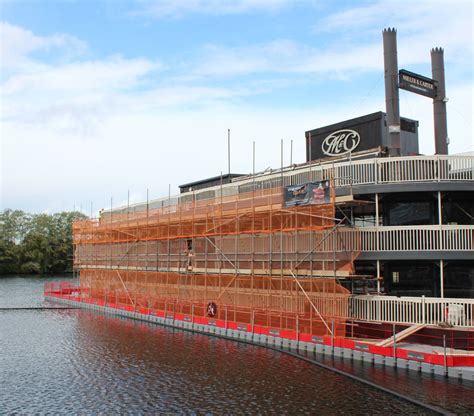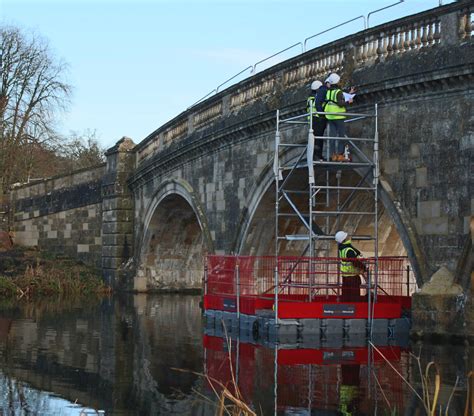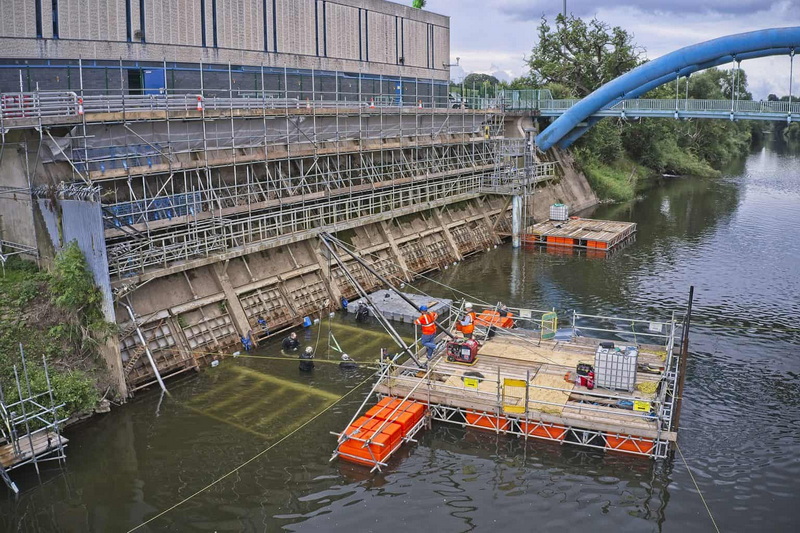Content Menu
● Introduction to Float Scaffolding Systems
● Key Components of Float Scaffolding Systems
● Safety Regulations for Float Scaffolding Systems
>> Structural Integrity
>> Fall Protection
>> Access and Egress
>> Special Considerations for Aquatic Environments
● Maintenance and Inspection
● Inspection Checklist
● Training and Competence
● Training Requirements
● Environmental Considerations
● Environmental Impact Assessment
● Case Studies: Successful Use of Float Scaffolding
● Future Developments in Float Scaffolding Technology
● Emerging Technologies
● Conclusion
● FAQ
>> 1. What are the primary components of a float scaffolding system?
>> 2. How often should float scaffolding systems be inspected?
>> 3. What fall protection measures are required for float scaffolding?
>> 4. What training is required for workers using float scaffolding systems?
>> 5. How should float scaffolding systems be moored?
● Citations:
The float scaffolding system is a unique and innovative approach to scaffolding, particularly useful in aquatic environments or areas where traditional scaffolding cannot be used. This system combines standard scaffolding components with floating elements, such as plastic floats, to create temporary work platforms over water. Understanding the safety regulations for such systems is crucial to ensure the well-being of workers and the structural integrity of the scaffolding.

Introduction to Float Scaffolding Systems
Float scaffolding systems are designed to provide access for workers in environments where traditional scaffolding is impractical, such as under jetties or near waterways. These systems are often used in construction, maintenance, and repair projects. The ScaffFloat system, for example, uses patented plastic floats with standard scaffold beams, tubes, and clips to create temporary pontoons and workboats.
Key Components of Float Scaffolding Systems
1. Plastic Floats: These are the buoyant elements that support the scaffolding structure, allowing it to float on water.
2. Scaffold Beams and Tubes: Standard scaffolding components used to construct the framework of the platform.
3. Clips and Connectors: Used to secure the scaffolding components to the floats.
Safety Regulations for Float Scaffolding Systems
Safety regulations for float scaffolding systems are designed to address the unique challenges of working over water. These regulations often align with general scaffolding safety standards but include additional considerations for aquatic environments.
Structural Integrity
- Load Capacity: The scaffolding must be able to support its own weight plus at least four times the maximum intended load.
- Design and Construction: The system should be designed and constructed by qualified personnel to ensure stability and safety.
Fall Protection
- Guardrails and Personal Fall Arrest Systems: These are essential for preventing falls from the scaffolding platform. Guardrails should be installed along all open sides, and personal fall arrest systems should be used when necessary.
- Safety Nets: In some cases, safety nets may be required to catch falling objects or personnel.
Access and Egress
- Safe Access Points: Ramps or ladders used to access the scaffolding should be securely attached and meet specific slope requirements to prevent slipping.
- Cleats and Handrails: These should be provided on inclined ramps to ensure secure footing and hand support.
Special Considerations for Aquatic Environments
- Buoyancy and Stability: The floats must provide sufficient buoyancy to keep the scaffolding stable, even in varying water conditions.
- Mooring Systems: The scaffolding should be securely moored to prevent drifting or movement during work.

Maintenance and Inspection
Regular maintenance and inspection are critical to ensure the ongoing safety of float scaffolding systems. This includes checking for damage to the floats, scaffolding components, and mooring systems.
Inspection Checklist
1. Float Condition: Check for signs of wear or damage.
2. Scaffolding Components: Verify that all components are securely attached and undamaged.
3. Mooring Systems: Ensure that the scaffolding is properly secured to prevent movement.
Training and Competence
Workers using float scaffolding systems should receive specialized training to understand the unique risks and safety measures associated with these systems. This includes training on fall protection, access procedures, and emergency response.
Training Requirements
1. Fall Protection Training: Workers should be trained in the use of personal fall arrest systems and guardrails.
2. Access Procedures: Training should cover safe access and egress methods.
3. Emergency Response: Workers should know how to respond in case of emergencies, such as scaffolding instability or falls.
Environmental Considerations
In addition to safety regulations, environmental considerations are important when using float scaffolding systems. This includes minimizing the impact on aquatic life and preventing pollution.
Environmental Impact Assessment
1. Aquatic Life Protection: Measures should be taken to avoid disturbing or harming aquatic life.
2. Pollution Prevention: Ensure that no materials or waste are released into the water during construction or maintenance activities.
Case Studies: Successful Use of Float Scaffolding
Several projects have successfully utilized float scaffolding systems to overcome unique challenges. For example, a recent bridge repair project used a float scaffolding system to access areas under the bridge deck, allowing workers to perform repairs without disrupting traffic flow.
Future Developments in Float Scaffolding Technology
Advancements in materials and design are continually improving the efficiency and safety of float scaffolding systems. New materials, such as advanced polymers, are being developed to enhance durability and buoyancy.
Emerging Technologies
1. Advanced Materials: Research into new materials aims to increase the lifespan and performance of floats.
2. Modular Designs: Modular systems are being developed to simplify assembly and disassembly, reducing setup times.
Conclusion
Float scaffolding systems offer a versatile solution for construction and maintenance projects in aquatic environments. However, their unique nature requires specialized safety regulations to ensure worker safety and structural integrity. By adhering to these regulations and maintaining a focus on training and inspection, the risks associated with float scaffolding can be effectively managed.

FAQ
1. What are the primary components of a float scaffolding system?
The primary components include plastic floats, standard scaffolding beams and tubes, and clips or connectors to secure these components together.
2. How often should float scaffolding systems be inspected?
Regular inspections should be conducted before each use and after any significant environmental changes, such as storms.
3. What fall protection measures are required for float scaffolding?
Guardrails and personal fall arrest systems are essential for preventing falls from the scaffolding platform.
4. What training is required for workers using float scaffolding systems?
Workers should receive training on fall protection, safe access procedures, and emergency response protocols.
5. How should float scaffolding systems be moored?
The scaffolding should be securely moored to prevent drifting or movement during work, using appropriate mooring systems designed for the water conditions.
Citations:
[1] https://www.bracingsystems.com/osha-scaffold-requirements-best-practices
[2] https://www.twinfm.com/article/floating-scaffolding-for-construction
[3] https://www.labour.gov.hk/eng/public/os/B/mss.pdf
[4] https://www.hardhattraining.com/when-is-fall-protection-needed-on-scaffolding/
[5] https://www.youtube.com/watch?v=qcU19gcQhek
[6] https://www.cdc.gov/niosh/docs/92-108/default.html
[7] https://oshatraining.com/wp-content/uploads/Basic_Scaffold_Safety_-_Fall_Protection_Requirements_Scaffolding.pdf
[8] https://www.tiktok.com/@gkrscaffolding/video/7301976708566076704
[9] https://pmc.ncbi.nlm.nih.gov/articles/PMC8750143/
[10] https://www.youtube.com/watch?v=2ka4Nl-B_QA
[11] https://www.safeworkaustralia.gov.au/system/files/documents/1703/scaffolds-scaffolding-work-general-guide.docx
[12] https://www.plu.edu/occupational-health-safety-manual/scaffold-safety/






















